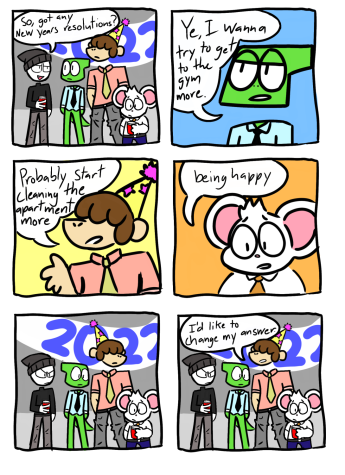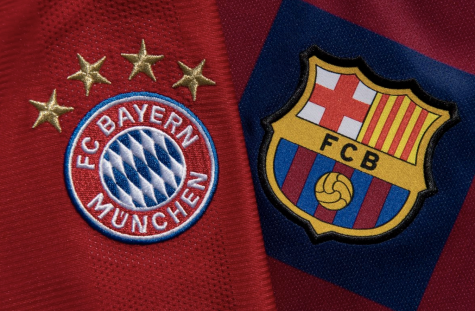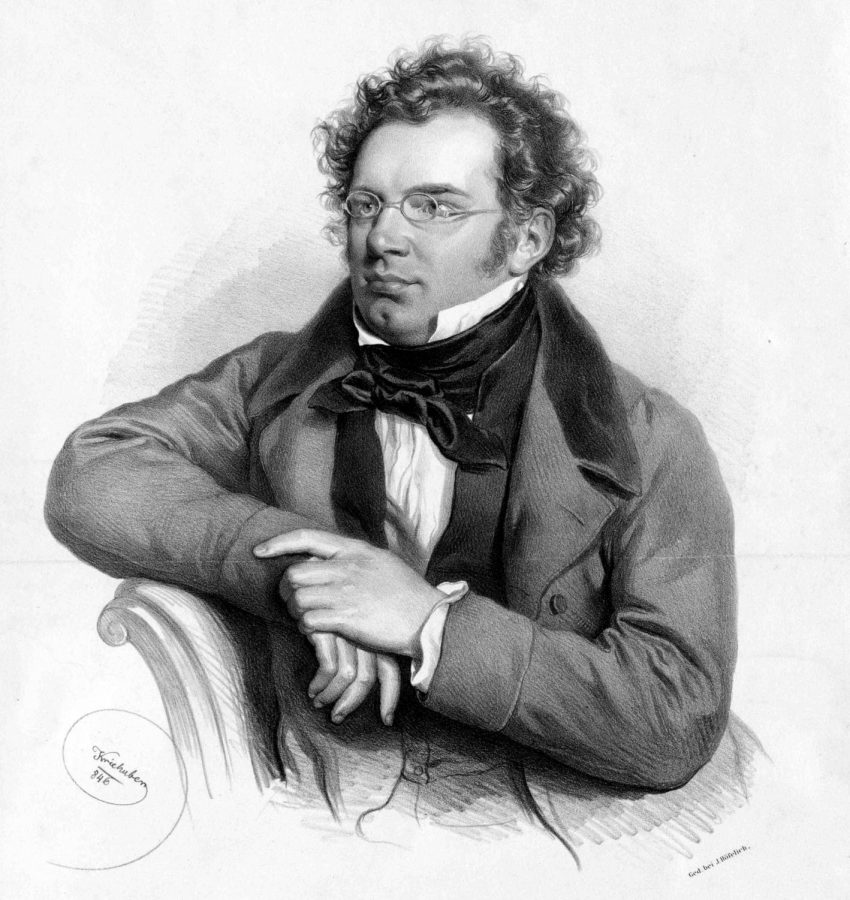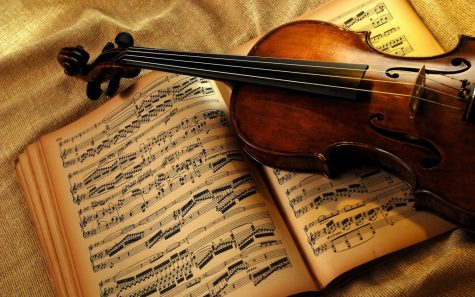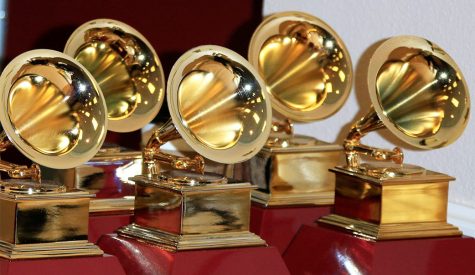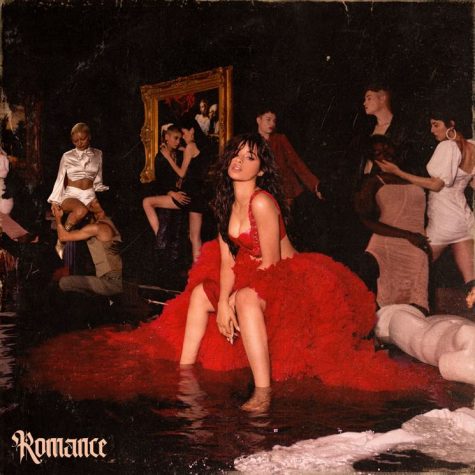Schubert’s 9th Symphony: the Bridge between Classical and Romantic
December 10, 2020
What do you picture when you think of Franz Schubert? It’s a name that most people will at least recognize, but beyond that, not much comes to mind. Some may know his Unfinished Symphony (no. 8), which is perhaps his most famous piece of work, or Erlkönig, his remarkable ballad for two voices and piano based on a poem by Johann Von Goethe. However, many of Schubert’s best works fly under the radar, an unfortunate fact considering the impressive quantity of fantastic compositions he wrote during his thirty-one year lifespan. Though Schubert was a man of vast talent and even greater creative ambition, he lived in Vienna at the exact same time as Beethoven, ending up perpetually in the shadow of the other great composer.
Now, this isn’t to say that Schubert carried any level of hatred for Beethoven. Quite the contrary, Beethoven was one of Schubert’s greatest inspirations. The younger composer had attended the premiere of Beethoven’s 9th Symphony in 1824, which inspired him to begin the process of writing his own 9th symphony only a year later. This symphony eventually came to be known as the “Great C Major,” due to both its unprecedented length and in order to easily distinguish it from Schubert’s 6th symphony in C major. It is arguably one of the last significant symphonies of the Classical period, although it is also very forward-looking in nature. Schubert’s 9th Symphony was completed around 1827 but not premiered until 1839 due to its length and difficulty, and can now be regarded as one of the few symphonies that began the transition from the Classical era to the Romantic era.
The symphony itself was a great undertaking for Schubert, and when played with all of the intended repeats, it spans over an hour in length. The symphony is also very difficult, with such strenuous woodwind parts and complex string parts that it was difficult to find an orchestra that would consent to premiering this work. There are even anecdotes about violinists in the London symphony orchestra falling off their chairs laughing upon seeing the music of the finale, saying it was simply too difficult for them to even consider playing. The first movement is written in sonata-allegro form, featuring a slow introduction, a primary and secondary theme, a development and recap of both themes, and finally the coda, which alludes back to the introduction. It was very typical for Classical era symphonies to have first movements in sonata form, so typical, in fact, that it became known as one of the greatest defining characteristics of a Classical symphony. Though this first movement is soundly Classical in nature, the sweeping melodies of his introduction and coda are certainly more forward-looking in that they foreshadow the importance of lyrical melodies in future Romantic symphonies.
In the second movement, also known as the slow movement, Schubert’s true talent for writing beautiful melodies shines through, along with his affection for playing with shifts between major and minor keys. This second movement is filled with color and drama, and in my mind it certainly has many parallels to the vast dynamic range and prominent melodies of a Romantic symphony. Additionally, this symphony features a much broader instrumentation than many classical symphonies, yet another thing which sets it apart. This is the first major symphony to use the trombone in any significant melodic manner, and it also calls for more woodwinds than a typical Classical symphony.
The third movement is one of the most groundbreaking movements, as it is a scherzo written in sonata form. This was uncommon at the time, although scherzos were generally the obvious choice for a third movement. Another aspect of this scherzo that sets it apart is that It morphs into a beautiful trio about halfway through, reminiscent of a waltz. This is a testament to Schubert’s love for dance music, and he was the first composer to write music described specifically as waltzes.
Finally, the movement in this symphony that reveals the extent of Schubert’s admiration for Beethoven is the fourth and final movement. This movement sits at a run time of about fifteen and a half minutes when played with repeats, and has a furiously difficult string part. It is in sonata-allegro form, much like the first movement, which is consistent with the normal structure of a Classical finale, as they are usually either in sonata or rondo form. Schubert 9’s legendary finale both starts and ends with a punch, but near the middle of this movement is when one of the most striking moments arrives. About halfway through the finale, a small quotation from Beethoven’s Ode to Joy can be heard briefly and suddenly in the woodwinds, right before Schubert launches into one of the most dramatic developments in this symphony. Throughout the second half of the finale, the influence of Beethoven’s 9th can be heard in the moving melodies of the woodwind and brass, a homage to the great composer who had died less than a year before Schubert’s symphony was finished. This monumental finale showcases all the musical complexity that Schubert was capable of, and pays respect to Beethoven while still being wholly reminiscent of Schubert’s own character and talent.
Franz Schubert, ever in Beethoven’s shadow, certainly made a name for himself with his momentous 9th symphony. Though I still do not think this symphony gets anywhere near the recognition it deserves, it is a fantastic piece of work that characterizes Schubert as one of the greatest composers of all time, and one who represented the closing of the Classical era and the transition forward towards Romantic music. I would strongly recommend Schubert 9, as it is quickly becoming one of my favorite symphonies. I think everyone can find something to enjoy in at least one of the movements, no matter how new you may be to classical music.
Listen to this symphony:
https://www.youtube.com/watch?v=kNocKxKd8-I
Sources/Further Reading:
- https://www.theguardian.com/music/tomserviceblog/2014/jun/17/symphony-guide-schubert-ninth-the-great-tom-service
- https://cso.org/uploadedFiles/1_Tickets_and_Events/Program_Notes/ProgramNotes_Schubert_Symphony9.pdf
- https://www.britannica.com/biography/Franz-Schubert
- https://www.thepiano.sg/piano/read/classical-and-romantic-period-symphonies





